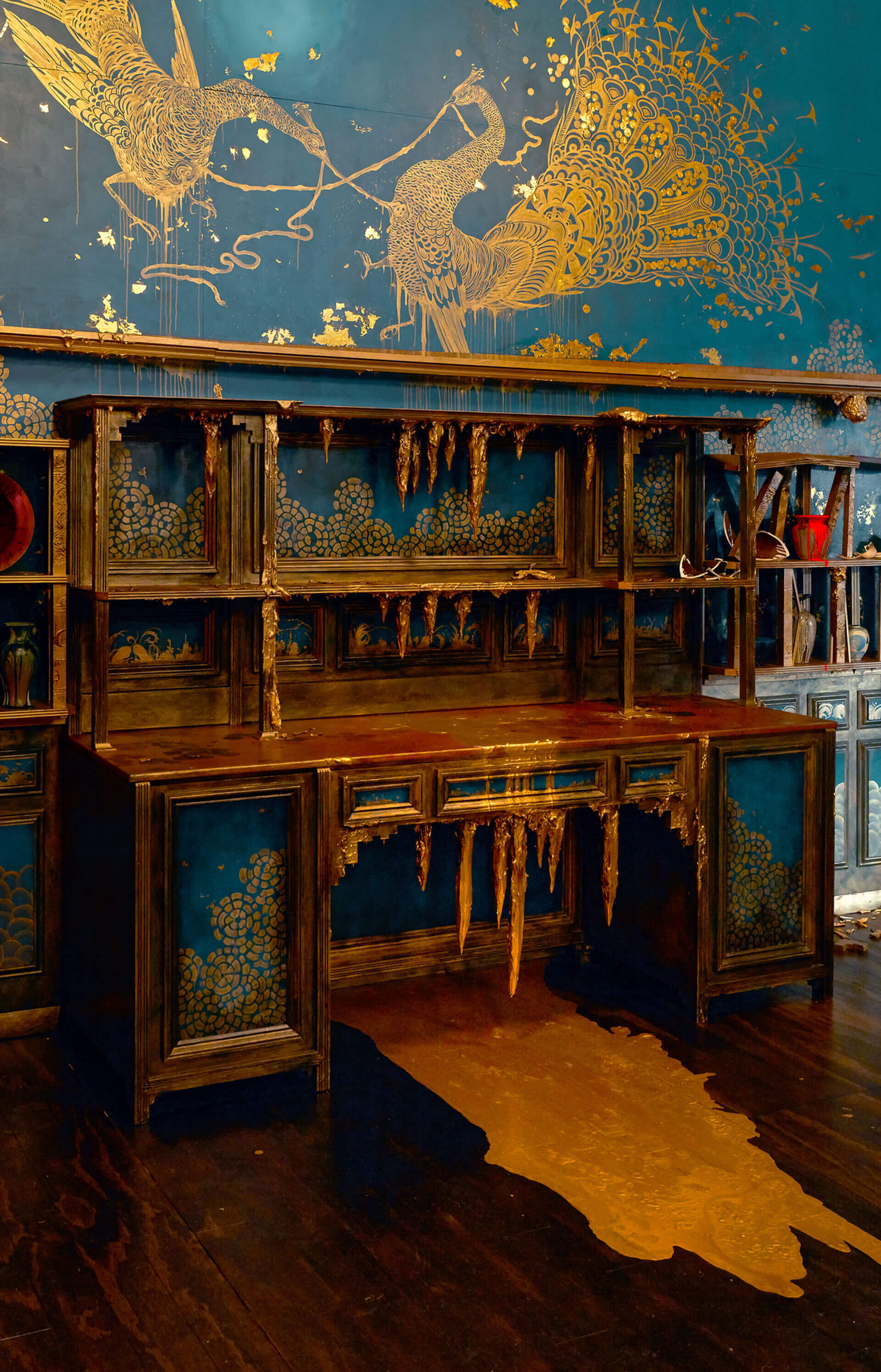Darren Waterston’s installation Filthy Lucre is a contemporary re-imagining of James McNeill Whistler’s 1876 decorative masterpiece Harmony in Blue and Gold: The Peacock Room. Waterston became fascinated with The Peacock Room both for its unrivaled union of painting and architecture and for its dramatic story of patronage and artistic ego.
The original — the dining room of the London home of shipping magnate Frederick Leyland — was designed to showcase Leyland’s collection of Asian ceramics, with Whistler’s painting La Princesse du pays de la porcelaine (1863-64) featured over the mantel. Asked to consult on the color scheme for the room, Whistler took bold — if not egregious — liberties while Leyland and his architect were away and in a fit of enthusiasm painted the entire room — executing his now famous peacocks over the expensive Italian leather wall panels. The collector refused to pay the artist and banned him from his house; Whistler, in response, painted an unflattering caricature of his patron titled The Gold Scab: Eruption in Frilthy Lucre (The Creditor). Conflating the words frilly and filthy, Whistler made a jab at Leyland’s own “peacocking” as well as his miserliness.
Waterston reconstructs the historical room as a sumptuous ruin. Inside, viewers will find Waterston’s re-interpretations of Whistler’s paintings, along with stalactite-like ceiling fixtures and crumbling shelving replete with 250 hand-painted ceramic vessels. Glaze will appear to ooze down the wall, and the shimmering central peacock mural will partially melt into the floor in a puddle of gold. A soundscape featuring voice and cello composed by the New York-based trio BETTY will be heard intermittently through the space, punctuating the silence with hauntingly beautiful reverberations. The installation hints at parallels between the excesses and inequities of the Gilded Age and the social and economic disparities of our own time. At the same time, the work raises questions about patronage and the relationships between artists, collectors, and institutions.
PHOTO CREDIT: Amber Gray Photography
CLICK ON IMAGE TO VIEW LARGE
Filthy Lucre, 2013-2014 Mixed media installation with sound 12 x 30 x 20 feet Installed at Victoria and Albert Museum, 2020
Filthy Lucre, 2013-2014 Mixed media installation with sound 12 x 30 x 20 feet
Filthy Lucre, 2013-2014 Mixed media installation with sound 12 x 30 x 20 feet
Filthy Lucre, 2013-2014 Mixed media installation with sound 12 x 30 x 20 feet
Filthy Lucre, 2013-2014 Mixed media installation with sound 12 x 30 x 20 feet
Filthy Lucre, 2013-2014 Mixed media installation with sound 12 x 30 x 20 feet
Filthy Lucre, 2013-2014 Mixed media installation with sound 12 x 30 x 20 feet
Filthy Lucre, 2013-2014 Mixed media installation with sound 12 x 30 x 20 feet










